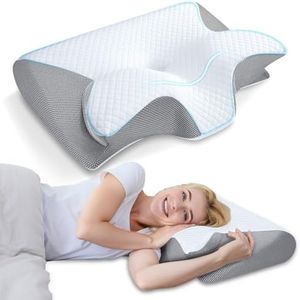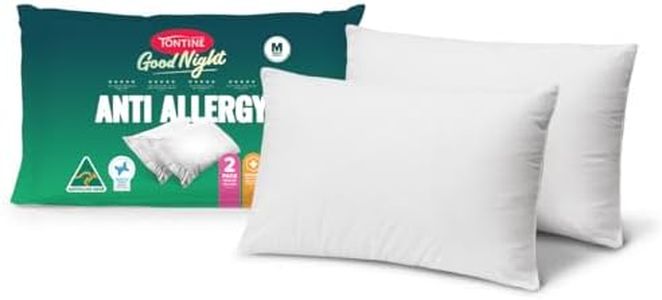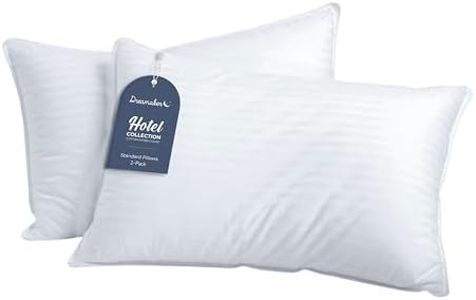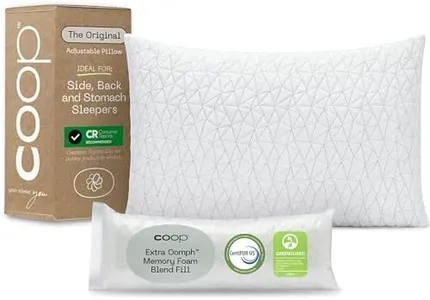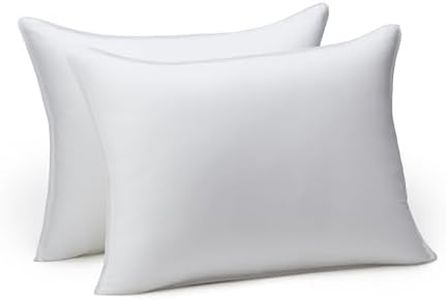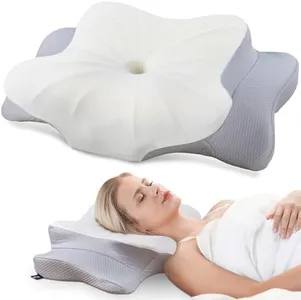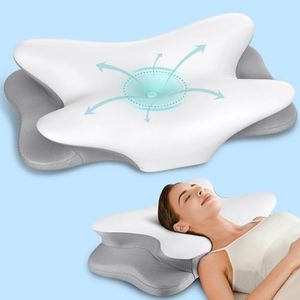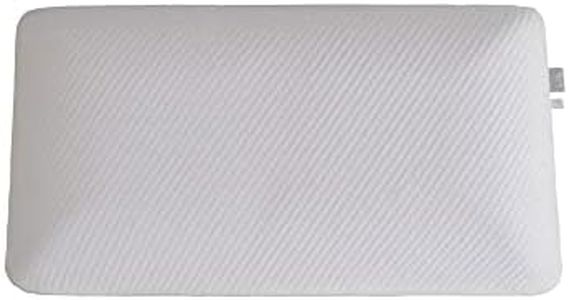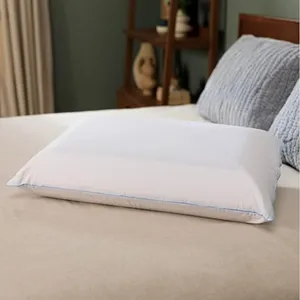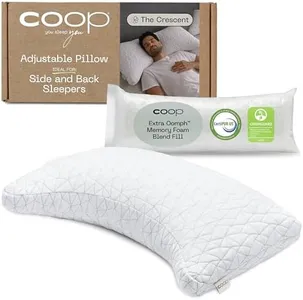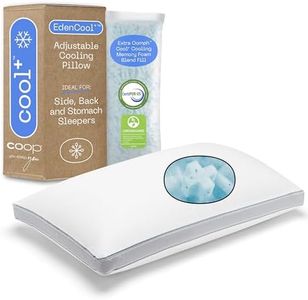We Use CookiesWe use cookies to enhance the security, performance,
functionality and for analytical and promotional activities. By continuing to browse this site you
are agreeing to our privacy policy
10 Best Pillows For Back Sleepers
From leading brands and best sellers available on the web.Buying Guide for the Best Pillows For Back Sleepers
Choosing the right pillow as a back sleeper can make a big difference in your comfort and the health of your neck and spine. Pillows are not just soft objects for your head—they play a key role in keeping your body aligned while you sleep. When shopping for a pillow as a back sleeper, you'll want to look for features that help support the natural curve of your neck without pushing your head too far forward. Here are the main things to consider, with explanations to make things clearer.Loft (Height)Loft refers to how high or thick the pillow is when it’s lying flat. This is one of the most important specs for back sleepers because the right loft helps keep your neck and spine in a neutral position while you sleep. Pillows are generally classified as low, medium, or high loft. Low loft (about 3 inches or less) is best for people with smaller frames or those who prefer less elevation. Medium loft (between about 3 to 5 inches) is usually ideal for most back sleepers since it provides enough support without over-raising the head. High loft (over 5 inches) is often more suitable for people with larger frames or for side sleepers, not typically recommended for back sleepers. To pick the right loft, consider your body size and whether your head feels pushed up or is sinking too low when you lie on the pillow.
FirmnessFirmness tells you how soft or hard the pillow feels. For back sleepers, a medium firmness is usually best, as it offers enough support to keep your head propped up but isn’t overly stiff. Too soft, and your head will sink down, leading to neck pain; too firm, and your head may be pushed up and out of alignment with your spine. When choosing firmness, think about your comfort preference and remember that your head, neck, and shoulders should feel supported, not strained.
Fill MaterialThe fill material is what’s inside the pillow, like memory foam, feathers, down, latex, or synthetic polyfill. Each material has a different feel and level of support. Memory foam and latex conform to the shape of your head and neck, which can be very supportive for back sleepers. Feather and down pillows are softer and can be adjusted by fluffing, but may not offer enough support unless they’re specifically designed for back sleepers. Synthetic fills are affordable and hypoallergenic, and medium-support options can work for back sleepers. Choosing the fill is often about your comfort preference, allergies, and any desire for easy care (for example, machine washable options).
ShapeMost pillows are rectangular, but there are also contour or ergonomic pillows designed to follow the curve of your neck and shoulders. These shapes can offer targeted support to keep your spine aligned, which is especially beneficial for back sleepers who may experience neck pain. If you have neck or back problems, a contour pillow could be a good choice, but for most people, a standard rectangular pillow with the right loft and firmness will work well.
BreathabilityBreathability refers to how well air flows through the pillow, affecting how warm or cool you feel at night. Some materials, like memory foam, can trap heat unless they have cooling features, while others like down or certain synthetic fills tend to be more breathable. If you tend to get hot while you sleep, look for pillows with breathable covers or cooling gel features. Breathability is mainly about your personal comfort and whether you often wake up hot during the night.
SizePillows come in a few standard sizes: standard, queen, and king. The right size depends mainly on the width of your bed and your personal preference. Standard size works for most people and is easiest to find pillowcases for. If you move around a lot or have a bigger bed, a queen or king size may be more comfortable. Select the size that matches your sleep style and fits your bed well without overwhelming it.
